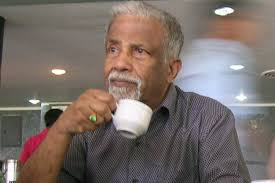Baidyanath Misra and E.C.G. Sudarshan, two prominent Indian theoretical physicists, discovered the Quantum Zeno Effect (QZE) in 1977 while conducting research at the University of Texas at Austin, USA. This effect is often summarized by the phrase:
In quantum mechanics, if a system (such as an unstable atomic nucleus) is continuously observed, its state does not change as expected.
This means that frequent measurements prevent a quantum system from evolving, effectively “freezing” it in its initial state.
This is analogous to how a kettle appears not to boil when someone is constantly watching it.
In 1989, the Quantum Zeno Effect was experimentally verified when physicists observed that an unstable atomic nucleus, which normally decays, did not decay when continuously measured.
This provided direct evidence that measurement affects quantum evolution, reinforcing the idea that observation plays a fundamental role in quantum mechanics.
The Quantum Zeno Effect has important applications in quantum computing, quantum cryptography, and precision measurement technologies.
It is used to stabilize quantum states, preventing decoherence in quantum systems.
This discovery remains one of the most fascinating results in quantum physics, showcasing India’s significant contributions to fundamental theoretical physics.







